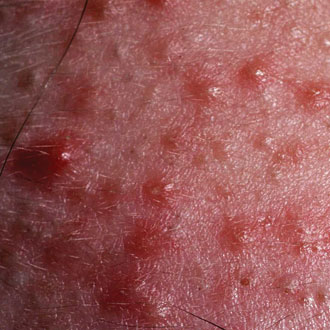1. Topical retinoids, not antibiotics, should be the first-line treatment of acne.
The primary cause of acne is overactive grease secretion. The glands become blocked and then blackheads form when the sebum is oxidised.
Antibiotics are therefore inappropriate as they will have no action on the blocked pores.
The use of antibiotics should be restricted to cases of inflammatory acne with pustules, nodules or cysts. Monotherapy with antibiotics should be avoided and a topical retinoid with or without benzoyl peroxide should be co-prescribed.
In the European Evidence-based (S3) Guidelines for the Treatment of Acne, topical retinoids were the main recommendation for comedonal acne.1 Adapalene is the medication of choice, as it is better tolerated than other topical retinoids.
For the treatment of mild and mild-to-moderate papulopustular acne, topical retinoids or a topical retinoid together with benzoyl peroxide were among the main recommendations made.
2. Study the type of acne lesions, as this will help in the selection of treatment.
There are four principal types of acne:
• Comedonal acne – the main lesions are blackheads and closed comedones (whiteheads) with few pustules or papules. This type of acne tends to be in the mid-face distribution.
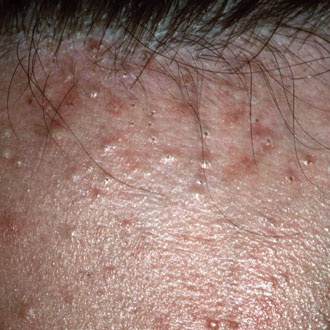
• Mild-to-moderate papulopustular acne – which consists of more papules and pustules along with comedones.
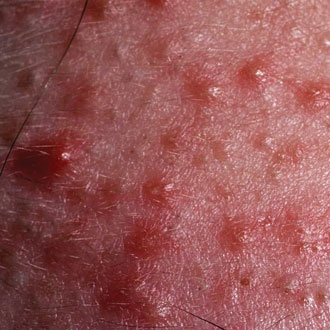
• Severe papulopustular acne/moderate nodular acne – there are many more pustules, papules and also nodules.
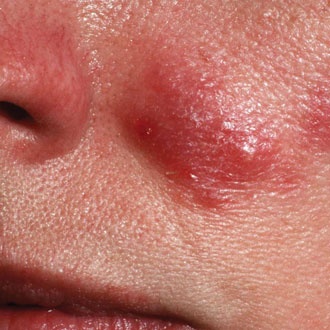
• Severe nodular acne/conglobate acne – this is the most aggressive acne. Lots of nodules and cysts are present, and this usually requires referral for specialist treatment with oral isotretinoin.
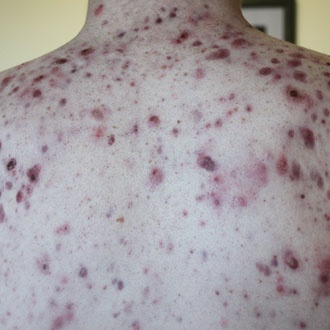
3. Always look for scarring.
Don’t forget to check the patient’s back. Even though the face acne may be relatively mild, the back could still be severe. If there are any signs of scarring, it is important to consider referral for oral isotretinoin treatment and to state in the referral letter that scarring is occurring, as this will get more priority. By the time scarring has developed, the acne will leave marks forever.
4. A family history of acne is important, as it may be indicative of more aggressive acne.
When asked to help a teenager with their acne, look at the accompanying parent(s) skin. If they have acne scars, or current acne is observed, this is a bad prognostic sign for the youngster. Their condition may seem minor, but as there is a genetic basis for the more severe types of acne, there is
a likelihood that it will get much worse. This needs to be discussed during the consultation and the skin must be watched carefully for signs of deterioration. There needs to be a lower threshold for referral, and more aggressive treatment for these individuals.
5. Moisturisers will make acne worse.
It is not uncommon to find patients using moisturisers, moisturising aftershave preparations, creams or make-up intended for older women, all of which will make the skin even greasier. Make-up is not a problem, so long as it is non-oily, non-comedogenic, tailored to acne-prone teenage skin and is removed with a skin cleanser at night, but moisturisers should be avoided.
6. There is a strong correlation between smoking and comedonal post-adolescent acne, particularly in women.
Comedonal post-adolescent acne – characterised by microcomedones and macrocomedones – appears to have
a significant correlation with cigarette smoking and advice to quit smoking is important.3
Diet does not seem to have a significant influence on acne, but recent findings have suggested an association between a high glycaemic index diet and longer acne duration. In addition, randomised clinical trials have demonstrated that a low glycaemic load diet can influence hormonal levels and improve insulin sensitivity, and dietary advice may have a part to play in more severe acne alongside other treatments.
7. Acne is strongly associated with psychosocial issues and depression.
A 2011 study found that mental health problems, low attachment to friends, not doing well at school, never having had a romantic relationship and never having had sexual intercourse were all associated with substantial acne.4 It also stated that adverse events, including suicidal ideation and depression, often regarded as risks associated with therapies for acne, may reflect the psychological burden of the condition, rather than medication effects.
A quality of life questionnaire, such as The Cardiff Acne Disability Index, can help identify patients with possibly serious psychological issues for whom counselling would be beneficial.5
8. Don’t forget secondary care referral.
Referral to a specialist is advised if a patient has any of the following:
• Any very severe variant, such as fulminating acne with systemic symptoms (acne fulminans).
• Severe acne or painful, deep nodules or cysts (nodulocystic acne) which could benefit from oral isotretinoin.
• Suspected severe social or psychological problems, including a morbid fear of deformity (dysmorphophobia).
• The patient is thought to be at risk of, or is developing, scarring.
• Moderate acne that has failed to respond to treatment (usually comprising several courses of both topical and systemic treatment over a period of at least six months).
• Suspected underlying endocrinological cause for the acne, such as polycystic ovary syndrome, which needs assessment.
9. Washing with soap and water is recommended, as is the use of a blackhead extractor.
In acne, washing with soap is helpful as it degreases the skin. Washing the face twice a day with soap and water, and the back if this is also affected, will help control the build up of grease on the skin.
Using a blackhead extractor after steaming the skin is an effective and more hygienic method of removing blackheads, rather than cause the trauma to the skin and the potential for infection by squeezing with fingernails.
10. Female patients’ acne can also be helped by combined hormomal contraception.
A review of all randomised controlled trials evaluating the effectiveness of combined oral contraceptives (COC) in acne concluded that oral contraceptive pills were effective in reducing both inflammatory and non-inflammatory lesions. However, the updated review from 2012 found a few important and consistent differences between COC types in effectiveness for treating acne.
The older progestogens, levonorgestrel and norethisterone, have stronger androgenic effects and therefore have the potential to exacerbate acne. Newer combinations, containing drospirenone, desogestrel or norgestimate are less androgenic and, as a result, may be more beneficial for the treatment of acne.
The only combined preparation that is licensed for use in the UK for the treatment of acne is Dianette but, as stated in Faculty of Sexual and Reproductive Healthcare guidance, there may be an increased risk of DVT associated with this combination compared with other COCs, and therefore it is not indicated solely as a contraceptive. Dianette is an option for women with severe acne that has not responded to oral antibiotics, or for moderately severe hirsutism. It should be withdrawn three to four months after the treated condition has resolved.
Dr Elizabeth Ogden is a GP and associate specialist in dermatology in Hertfordshire
Competing interests: She has been sponsored by GSK and Galderma to talk about acne to health professional groups but the talks were educational, not promotional
References


